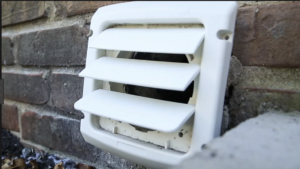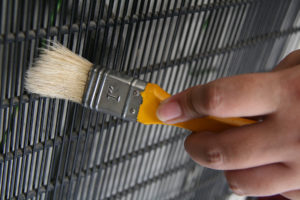Spring might be around the corner, but February can still bring plenty of harsh winter weather. Some of the harshest of the season, as we experienced in the first few days of this month. So that makes this month the perfect time to knock off some more of those indoor tasks to get your home ready for warmer times.
But first you have to prepare your home for spring by thinking “FRESH.” A fresh house can help combat the cabin fever that can overwhelm you in the last month of winter.
We’ve put together a handy checklist of home maintenance tasks to give your home a lift in February.
Check these to-do items off your list, then sit back and relax for the last few weeks of winter.
1. Paint
Freshen indoor paint on walls, cabinets, doors, and trim.
Sometimes a once-over with a Magic Eraser sponge will remove marks and smudges, reducing the need for a complete paint job. If that won’t cut it — and you need to paint indoors in February—stir a tablespoon of clear vanilla extract into the paint can to make the smell less noxious. If you have trouble removing painter’s tape from furniture or walls, heat it briefly with a hair dryer.

If you are unable to paint yourself, a painter will charge roughly $300 to $500 for a 12-foot-square room. Since spring is the busy season for painters, you may get a discount if you hire one at the end of winter.
2. Give the laundry room a redo
Clean and re-organize your laundry room so it’s roomier and more efficient. Scrape dried-on laundry detergent from ridges in your washer, throw away laundry products you never use, and store the rest in out-of-reach places to protect young ones.
Take advantage of every square inch of laundry room space. If you don’t have room for a drying rack, extend a curtain rod over your machines to hang delicate clothes, and insert a “slim cart” between your washer and dryer to hold cleaning supplies. Try storing bins, buckets, and laundry bags on wall hooks to free up floor space.
 3. Clean out dryer vents
3. Clean out dryer vents
Clean the duct that connects the back of your dryer to outside vents. If you don’t, lint and other debris could decrease your dryer’s efficiency, increase energy bills, and even cause fires. Also, make sure birds and other animals haven’t made a home in your warm and toasty vent.
Twice a year, use a leaf blower to remove lint and debris from ducts. Also, cover the outside vents with a fine mesh screen so birds and bugs don’t nest in ducts.
4. Clean refrigerator coils
To keep your refrigerator in tiptop shape and save energy, clean the refrigerator condenser coils located in the back or on the bottom of the appliance.

Use a vacuum to clean coils — use the upholstery attachment. Vacuum the floor under and behind the fridge, too. Then, shove a duster or refrigerator coil brush (about $5 and designed for this exact purpose) between the coils, and clean the rest of the dust, hair, and dirt still clinging to the coils.
5. Clean and maintain your sump pump
Clean out your sump pump pit and make sure the sump pump is working in February to prepare for the increase in groundwater that spring rains will cause.

Test the pump by adding water to the pit, and confirm the pump ejects it as it is designed to. Be sure to replace the pit cover after confirming the pump works. Also, make sure nothing obstructs the sump pump pipe, which drains water to the outside of your home. If you are not sure if your sump pump is working properly call a professional — it’s better to be safe than sorry.
6. Give your mattress some TLC
Vacuum box springs and the mattress top and bottom. Rotate or flip the mattress.
If you have a one-sided mattress — one side is padded; the other isn’t — don’t bother flipping; just rotate it to provide even aging. If you have a two-sided mattress, flip every two months to prevent sags.

7. Look for leaks
Inspect your roof for missing shingles and damaged vent boots, and check your foundations for cracks that can cause big problems when spring rains pour on your home.
Wait until it rains, then climb into your attic to look for leaks. It’s easier to spot water leaks during a storm. These leaks can go unnoticed for months, causing damage to insulation and creating an opportunity for mold to grow.
Call in a professional if this is something you are not comfortable doing on your own.
THE 905 REAL ESTATE GUYS
info@905realestateguys.com
Sean Kavanagh 905.220.9198
Leo Manchisi 905.334.9650

